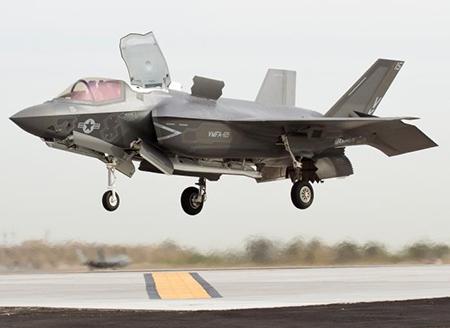This is the official note of the JSF program officials.
The Small Diameter Bomb II or SDB-II - the official note reads - can acquire and hit moving targets up to 70 kilometers away and should enter service in the 2017.
The weapon can be integrated into variant A of the F-35, but only four bombs can be transported in the current configuration of the F-35B, a short-take-off and landing variant of the JSF.
The SDB-II - added by the JSF program - would not have entered service with the B variant before the 2022, so it is not our priority even if we have to make changes to the "weapons bay" before being able to integrate the weapon system.
The SDB-II have now completed their development process and cannot be modified in any way, which is why the only solution is to redesign the internal hold.
The JSF program has not issued the cost of the changes because the redesign is still ongoing. The works, however, will not start soon.
The SDB-II is a new generation bomb designed just for the F-35.
The United Kingdom is the second buyer of the F-35B behind the Marine Corps, with 138 aircraft. Italy has purchased thirty F-35B and sixty F-35A.
The United Kingdom has not yet committed itself to buying the SDB-II, but is aware of the problem of the internal hold. Italy, on the other hand, has already been informed, but there is still no official note.
That millionaire oversight
The F-35B was designed to carry eight SDB-IIs internally. These bombs would allow the F-35 pilot to hit eight different targets over 70 kilometers away and with absolute precision.
The SDB-IIs are designed to change their course in flight and follow the objectives through infrared or moving laser guidance systems.
The F-35B, however, can only accommodate four SDB-II due to the internal hold which is significantly smaller than the A and C versions due to the design of the Stovl aircraft.
The US Navy wanted to immediately equip the F-35B with the SDB-II, but preferred to carry on the integration on the F / A-18 Super Hornet.
It should be noted that the software necessary to implement the SDB-II will be part of the 4 Block, whose release is foreseen in the 2022.
In short. The F-35B will only be able to carry four of the eight ammunition provided internally and will not be able to use them before the 2022 due to the software that will be available just in that year.
The Pentagon - the official note reads - knows the SDB-II problem since the 2007. Heavy changes have been made to the aircraft to allow the SDB-II to be transported even though the main design is now that.
The Marine Corps has already received 34 aircraft. The delay in the implementation of SDB-II ammunition will not affect the fighter's ability to fly, but will limit the operations that the F-35B will be able to perform.
The Small Diameter Bomb II program
The Small Diameter Bomb II program has a total cost of 4,1 billion dollars for 17 thousand ammunition, five thousand of which for the US Navy.

The sophisticated weapon system produced by Raytheon will replace the previous version built by Boeing. According to Raytheon, the SDB-II program has now reached the final stage of development and a decision to start production will be made shortly. Certainly - explain from the company - the SDB-II module will not be altered to meet the space requirements of the F-35B and we hope the redesign of the internal hold.
We knew about the F-35 internal hold problem - they explain from the Pentagon - but we preferred to postpone the issue pending a sufficient level of hunting maturity. The other weapon systems linked to the Block 4 software are the AGM-154 Weapon Joint Stand-Off, the Joint Strike Missile of the Norwegian Kongsberg, the Turkish SOM and the AIM-9X Sidewinder Block II.
To date, the Pentagon has already invested more than 700 million dollars in the development of SBD-II.
Meanwhile - add from the Air Force - the F-35A variant of the Joint Strike Fighter continues to make progress in the tests dedicated to the release of future weapons transported internally (stealth configuration) and externally.
Since last year the Air Force has carried out four tests with the AIM-120 AMRAAM missiles and some JDAM release tests. Overall, the Air Force plans to buy 1.763 F-35A.
Franco Iacch
(photo: Lockheed Martin / Raytheon)












